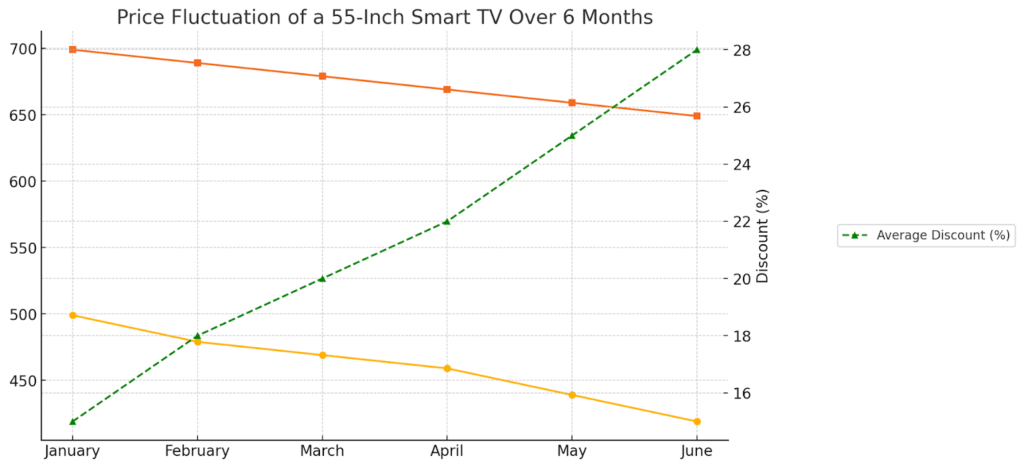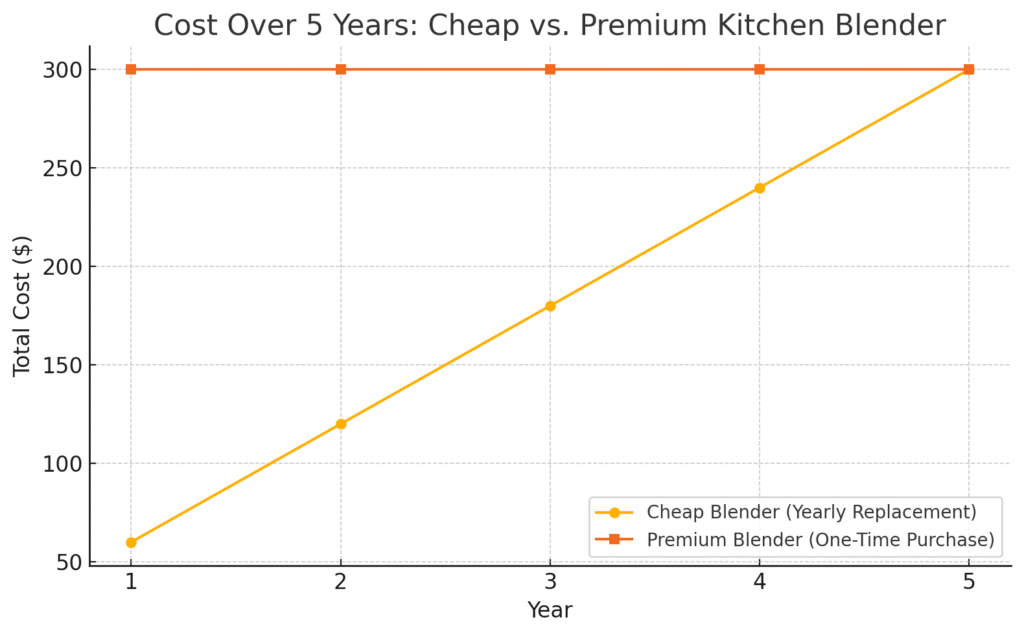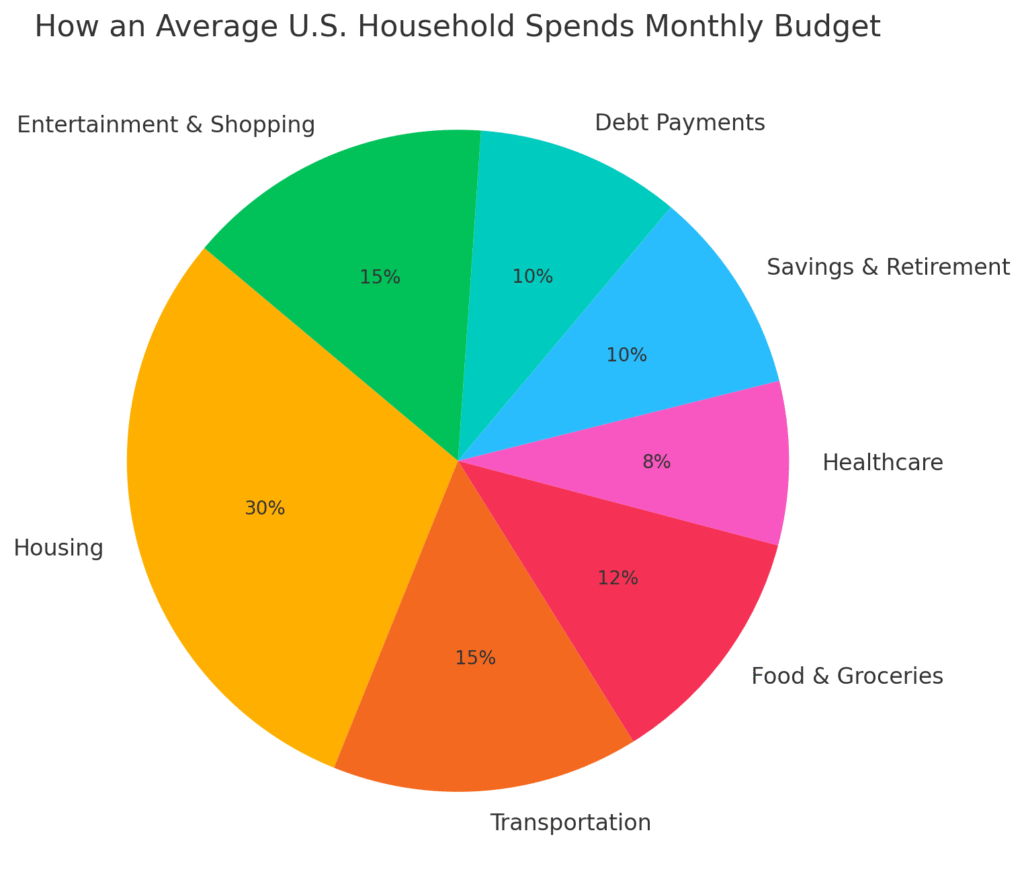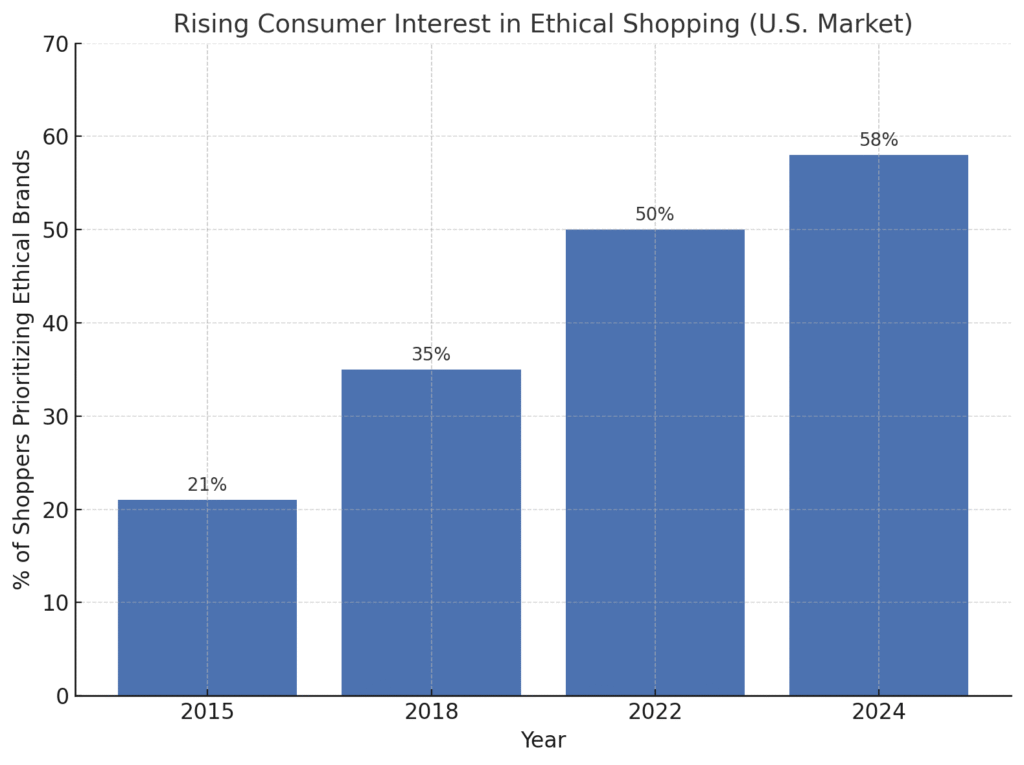How Does a Consumer Know Whether a Purchase May Be a Good Deal?
Imagine you accidentally find an advertisement for a shiny new online sale with a discount of 70%. The offer is seemingly tempting. But is it truly a good deal or is it a marketing trap? In the modern, complex world of shopping, people are exposed to an unlimited number of promotions, discounts, and sales tricks. Understanding how to assess whether a purchase is a good deal is no longer a nice-to-have skill. It is a key tool that enables you to make smart, value-based, and financially viable consumer buying decisions.
If you’re unsure how does a consumer know whether a purchase may be a good deal, this guide covers everything you need to know while evaluating a good deal.
Price Comparison
With endless promotions and offers, it’s often challenging to figure out how a consumer knows whether a purchase may be a good deal. The first step in judging a good deal is always to compare prices. When endless retailers are offering the same or similar products, all it takes is a quick price comparison to know if you are saving.
Using Price Comparison Tools
Price comparison tools are a necessity for intelligent consumer buying today. Websites such as
These tools enable consumers to compare prices in real-time and over time across different sellers. This helps you determine if an existing discount is truly worthwhile or if it’s just one of the normal price variations.
Dynamic Pricing
Dynamic pricing is already utilized by many retailers, who adjust prices based on demand, browsing history, and even the time of day. Electronics, airline tickets, and hotel bookings can vary in a matter of hours. Before searching high-ticket products, use incognito mode and delete your browsing history to prevent retailers from charging you a higher price.
Misleading Discounts and Inflated Prices
A common tactic amongst retailers is to distort prices and give an impression of huge savings. Most retailers in the U.S. increase original prices. Especially during Black Friday or Cyber Monday, so that it appears to offer a bigger discount than it does. To be on the safe side, always check the price history and avoid being fooled by pretense.

This chart illustrates how understanding price history helps consumers identify genuine deals rather than falling for short-term marketing tactics.
Assessing Value Over Price
Although price attracts, a good deal can only be thoroughly analyzed by considering the total value assessment, not just the cost alone. It is an essential step in evaluating a good deal.
Total Cost of Ownership (TCO)
The lifetime cost of ownership encompasses future expenses, including maintenance, energy, repair, and subscription costs. A low-priced printer may be expensive in the long run, as it will require frequent ink changes or costly servicing. When these hidden costs are factored in, it provides a more accurate evaluation of the deal.
Quality vs. Quantity
It is often observed that higher-priced items tend to offer better durability and performance. For instance:
| Product | Cheap Option | Expensive Option |
| Shoes | Worn in 6 months | Last 3+ years |
| Headphones | Poor sound | Studio quality |
Durability can also save money in the long term by reducing the need for future maintenance and repairs.
Suitability for Needs
Not all high-quality products fit your lifestyle. Questions to be asked before purchasing:
- Would I utilise all its features?
- Is it suitable for my everyday life?
- Does it match with other things?
For example, casual photographers may benefit more from a mid-range smartphone camera than a $2500,000 DSLR.
Tip: Always balance quality, need, and long-term value for smart consumer purchase decisions.

This graph illustrates how the initial cost can be misleading if you overlook the long-term durability.
The Psychology Behind Deals

Psychology applied by marketers helps to manipulate behavior by making deals appear more attractive and appealing than they actually are.
Rule of 100.
The Rule of 100 is one of the most excellent psychological pricing strategies. This principle is offering:
- Below 100 dollars: Percentage discounts seem bigger (e.g, 25% off $60)
- Above 100 dollars: Dollar discounts are more appealing (e.g, $200 off $1,000).
This knowledge can help avoid the influence of fictional prices.
Scarcity and Urgency Tactics
The retailers establish a sense of urgency by:
- Limited-Time Offers (“Sale ends today!”)
- Low Stock Alerts (“Only 3 left!”)
- Exclusive Deals for Members
These induce fast, instinctive buying decision-making.
Impulse Buying vs. Intentional Buying
Here is the main difference:
- Impulse Buying: Emotional incentives such as glamorous advertisements or the use of a countdown clock.
- Intentional Purchasing: study, comparison shopping, reading consumer reviews, and long-term value analysis.
Emotional Anchoring
Putting inflated original prices alongside the discounted prices overstates the savings, even when the original price was hardly ever implemented.
Tip: Take a break, think, and search to prevent being caught by emotions and make the correct deal analysis.
Utilizing Customer Reviews and Ratings

Customer reviews are a vital tool for proper deal evaluation. The reviews left by customers are an essential tool for assessing the appropriate deal. They demonstrate real-world experiences other than marketing claims.
Importance of Customer Reviews
Reviews confirm the functionality of the products, reveal weak points, and indicate utility life problems. For instance, 5-star reviews can highlight the excellent battery life; however, a series of 1-star reviews can point out that it overheats considerably, providing vital information needed to make smarter consumer purchases.
Quantity vs. Quality of Reviews
Thousands of generic reviews offer little insight. Honest, experienced reviews are valuable assessments. Identify patterns that occur in several reviews.
Verified vs. Unverified Reviews
Reviews that are verified are more trustworthy, whereas the unverified ones can be false or fabricated. Balanced opinions can be found by cross-checking the reviews on Amazon, Best Buy, and Walmart.
- Verified reviews: customers who have bought and used the product
- Unverified: It can be fake or manipulated
Brand Reputation and Expert Recommendations
Additional confidence is found in trusted brands and reviewers who are experts in technology blogs or review sites.
Negative Reviews Are Valuable Too
The consistent negative trends are indicative of bad long-term value even in discounted products.
Budgeting Strategies and Financial Awareness

It is always essential to determine if a deal is affordable to you, even when it appears excellent on paper. The competitor sites merely skim over this. However, the intelligent consumer realizes that any genuine good deal is value-oriented and yet aligns with budgeting strategies as well.
- Applying the 1% Rule
The 1% Rule is one of the most useful financial rules that helps a shopper step back before making a big purchase. This makes you analyze whether the product is a need or a want. If something is over 1 percent of your yearly salary, then think twice about buying it.
For example, when you earn $60,000 yearly, think before making any purchase above $600.
This basic rule can help avoid impulse purchases and make consumer purchasing decisions more conscious.
- Opportunity Cost
Opportunity cost applies to all purchases. The other thing you could have bought or saved up instead.
For example, a purchase as unnecessary as a $1,200 smartphone can postpone a long-overdue dental treatment. That $3,000 spent on vacation may put your emergency fund construction on hold.
After evaluating these trade-offs, you will have your cost-benefit analysis before dealing with any evaluation of the deal.
- Budget Planning for Major Purchases
Follow these simple steps for budget planning:
- Step 1: Limit the amount of money that you can spend on unnecessary things.
- Step 2: Create a wish list and then buy it later, rather than making an impulse purchase.
- Step 3: Using sinking funds can save towards big purchases that are going to happen in the future.
It gives you a clear outline of your monthly liabilities, and therefore, you can tell whether or not that great deal is financially prudent.

Evaluating Product Use and Functionality
The most expensive, highly-rated products are not worth it when they do not apply to your lifestyle or your real needs. Understanding product functionality is key to purchase decision-making.
Match Product to Actual Needs
The next time you are about to purchase a product, ask yourself the following questions:
- Will I use it?
- Is it addressing an actual issue or a nice-to-have?
- Am I being charged more than what I require?
For example, the idea of purchasing a high-end $2000 espresso machine may be thrilling. However, when you drink coffee only once a week, a $150 model can suit you much better. In this case, one can talk about a traditional judgment of value over glamour.
Lifestyle Fit & Frequency of Use
Here’s what to do:
- Daily-use products (smartphones, laptops, appliances): Pay more for durability and performance.
- Infrequently Used Items (party equipment, camping equipment): It may be more cost-effective to rent or purchase lower-end models.
Cost-benefit analysis enables you to get the whole picture.
Quick Checklist
The following checklist can help you in an effective purchase decision-making:
- I will use this on a regular basis.
- Features align with my actual needs.
- Does this product truly fit my life?
- It is well affordable within my budget.
- The operating and maintenance costs are satisfactory.
Using this checklist improves deal evaluation and helps avoid regret-driven purchases.
Post-Purchase Considerations
Any transaction is incomplete without considering the post-purchase factors, which have a direct correlation with consumer behavior and satisfaction in the long run.
Return Policies
Always check:
- Return window: Number of days to return.
- Restocking fees: Items that are opened will be charged.
- Return procedure: Simple or complicated?
- Shipping costs: Who pays the shipping?
For example:
| Retailer | Return Window | Restocking Fees | Free Return Shipping |
| Amazon | 30 days | No | Yes |
| Best Buy | 15-30 days | Sometimes | Sometimes |
| Walmart | 90 days | No | Usually |
Warranties
Always review:
- Length of Coverage: Longer warranties offer peace of mind.
- What’s Covered: Is accidental damage included?
- Ease of Claims: Are warranty claims processed smoothly?
The warranties have a significant impact on the cost of ownership.
Customer Service
Verify that they offer reliable customer service. Quality support provides quick solutions which save time and temper.
Hidden Charges that Destroy “Good Deals”
Watch for:
- Delivery and set-up costs
- Subscription renewals
- Mandatory accessories
- Cancellation fees
For example, a treadmill offered at $399 is a fantastic deal until you consider the $150 shipping charges, the $50 assembly requirement, and the required app subscriptions. Apparent savings are often misinterpreted as a poor deal evaluation due to small, hidden costs.
Ethical and Sustainable Shopping
Consumer purchase decisions must be ethical. Over the past few years, a significant number of consumers in the U.S. have begun to incorporate ethical shopping and sustainability into their criteria for evaluating deals. It may not be a good deal when the product you are buying is contrary to your beliefs, or it harms nature.
Ethical Sourcing
Ethical sourcing entails products being manufactured under good working conditions, with respect for workers’ rights, the environment, and a sustainable experience. It may be accomplished via:
- The transparency of the supply chain
- Certifications
- Fair labor practices
Environmental Impact
Sustainable purchases contribute to the minimization of the long-term destruction of the environment:
- Carbon Footprint
- Packaging Waste
- Recyclability
When you select sustainable products, you indirectly save on the total cost of ownership to the planet, which is not explicitly mentioned on the product but is of great importance.
Corporate Responsibility
In addition to the product itself, responsible companies tend to:
- Give to charitable agencies
- Take part in society initiatives
- Release yearly sustainable reports
By selecting brands that are engaged in ethical treatments, there is a high possibility that you will get good customer service, the product will last long, and you will be satisfied in the long run.

Quick Ethical Shopping Checklist
Consider the following things for ethical shopping:
- Fair labor certification
- Transparent supply chain
- Eco-friendly packaging
- Corporate social responsibility
- Minimal environmental footprint
Smart Shopping Strategies
Savvy shoppers employ technology devices and take the time to enhance their assessment of deals.
- Use of Shopping Tools and Technology
Smart consumers adopt extensions (Honey, Rakuten), browser extensions to automatically apply coupons, price trackers (CamelCamelCamel, Google Shopping) to monitor price reductions, deal aggregators (Slickdeals, RetailMeNot, TechBargains) to find verified discounts, and cashback sites (Rakuten, TopCashback, Capital One Shopping) to receive rewards.
- Cashback and Coupon Tools
Utilize coupons, cash back, and loyalty points for maximum savings. For example, a $200 product might drop to $150 after stacking discounts.
- Timing Purchases for Seasonal Discounts
The biggest sales, such as Black Friday, Cyber Monday, Memorial Day, and Labor Day, usually offer the best discounts, with percentage off ranging between 20% and 60%.
- Watch Out for False Discounts
Retailers can overstate the original prices to imply that a larger discount is being taken. Check real savings using price comparison tools.
- Create Wishlists and Practice Patience
Add products to wishlists, keep track of the prices, and make a purchase only when substantial discounts are observed.
Conclusion
To determine whether a particular buying opportunity is a good deal, it is not enough to chase the discounts. Consumer purchase decisions play a significant role. Integrating price comparison, value judgment, customer ratings, budget, ethical aspects, and intelligent shopping tools, consumers will be able to make reliable choices. By following these innovative shopping strategies, consumers can determine whether a purchase is a good deal.






